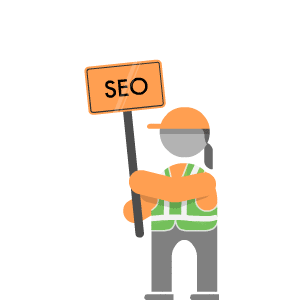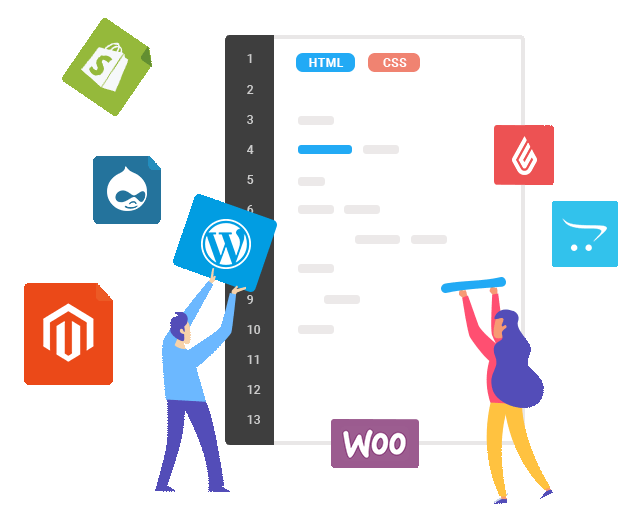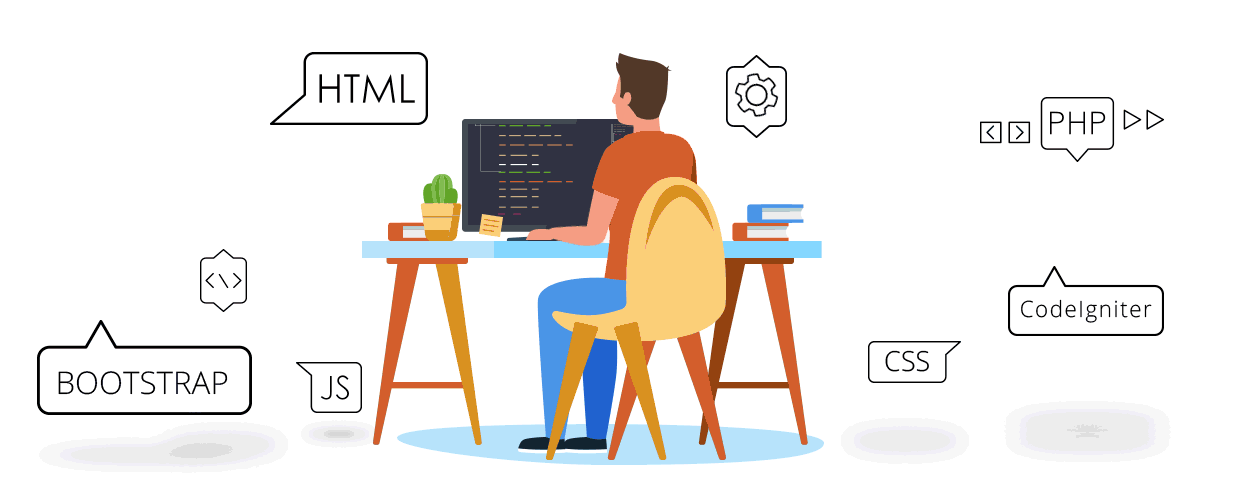5 min
27 Jan, 2025
SEO-Optimized Website Development: A Complete Guide to Building High-Ranking Websites
In today’s digital world, having a website is essential for any business or brand. But simply having a website isn’t enough; it needs to be optimized for search engines. SEO-optimized website development is the key to creating websites that not only look great but also perform well in search engine rankings. Whether you’re building a new website or optimizing an existing one, understanding how to integrate SEO into your web development process is crucial. This article will explore the concept of SEO-optimized website development and provide actionable insights on how to build a website that ranks well and attracts organic traffic.

What is SEO-Optimized Website Development?
SEO-optimized website development refers to the process of building a website with both user experience and search engine optimization (SEO) in mind. It involves incorporating SEO best practices during the website development phase to ensure that the site is easily crawlable by search engines, fast to load, mobile-friendly, and structured in a way that makes it easy for search engines to index.

A website that is optimized for SEO not only ranks higher on search engine result pages (SERPs) but also delivers a better experience for users. This means incorporating various SEO techniques into the design and development stages, ensuring that the website meets both user and search engine expectations.
Key Elements of SEO-Optimized Website Development
To create an SEO-optimized website development process, you need to focus on several key elements that impact your website's performance in search engines. Let’s break down the most crucial aspects.
Website Structure and Architecture
The structure of your website plays a significant role in SEO. A well-organized website is easier for search engines to crawl and index. SEO-optimized website development focuses on a clean, logical structure with a clear hierarchy.

Best Practices for Website Structure:
Logical Navigation: Your website should have a clear menu and logical navigation that allows both users and search engines to find important pages quickly.
Internal Linking: Linking between pages on your website helps search engines understand the relationship between your pages and spreads link equity across your site.
URL Structure: Use clean, descriptive, and SEO-friendly URLs. For example, use www.gen-nextsolutions.com//seo-optimized-website-development instead of www.gen-nextsolutions.com/page?id=1234.
A well-organized site helps users navigate easily and ensures search engines can crawl all your important content.
Mobile-Friendliness
With the increasing use of mobile devices to browse the internet, Google has made mobile-friendliness a significant ranking factor. SEO-optimized website development must ensure that your website is fully responsive, meaning it adapts seamlessly to various screen sizes.
Why Mobile Optimization Matters:
Mobile-First Indexing:Google uses mobile-first indexing, meaning it primarily looks at the mobile version of your website when ranking it.
Improved User Experience:A mobile-friendly website provides a better user experience, reducing bounce rates and improving engagement.
Responsive design ensures that your website looks good and functions well on all devices, which is essential for SEO-optimized website development.
Website Speed and Performance
Page load speed is a critical aspect of both user experience and SEO. SEO-optimized website development should prioritize fast-loading pages, as Google uses page speed as a ranking factor. A slow website can frustrate users, leading to higher bounce rates and lower rankings.

How to Improve Website Speed:
Image Optimization: Compress images without sacrificing quality to reduce load times.
Minimize HTTP Requests: Reduce the number of elements on a page (like scripts and styles) to minimize server requests.

Enable Caching: Leverage browser caching to speed up page loading times for returning visitors.
A fast website not only ranks better but also provides a better user experience, keeping visitors engaged and reducing bounce rates.
Keyword Optimization
Effective keyword research and optimization are fundamental to SEO-optimized website development. By targeting the right keywords, you increase the chances of your website being discovered by users searching for your products or services.

Keyword Optimization Best Practices:
Title Tags: Ensure each page has a unique title tag with the targeted keyword (e.g., “SEO-Optimized Website Development Services”).

Header Tags: Use H1, H2, and H3 tags to organize your content and include keywords in headings.

Content Optimization: Naturally incorporate your target keywords throughout the page’s content, including in the first 100 words, without keyword stuffing.

Proper keyword optimization makes your content more relevant to search engines and improves your rankings for target search terms.
Technical SEO
Technical SEO focuses on the backend of your website and ensures it is optimized for crawling and indexing by search engines. SEO-optimized website development incorporates various technical elements to make your site more accessible to search engines.

Important Technical SEO Elements:
XML Sitemap: An XML sitemap helps search engines crawl and index your pages more efficiently.
Robots.txt: This file instructs search engines which pages to crawl and which to avoid.

HTTPS: Secure websites are prioritized by search engines. Having an SSL certificate (HTTPS) is a ranking factor.

Structured Data: Use schema markup to help search engines understand the content of your pages better and improve the chances of rich snippets appearing in search results.

These technical factors contribute significantly to your website’s search engine visibility and overall ranking.
Why SEO-Optimized Website Development Matters
Better Search Engine Rankings
One of the most significant advantages of SEO-optimized website development is the ability to rank higher on search engine results pages. By following SEO best practices during the development phase, you’re setting your website up for success from the start. High search engine rankings lead to increased visibility, which translates to more organic traffic.

Enhanced User Experience
A website that is optimized for SEO is also optimized for users. Fast load times, mobile responsiveness, easy navigation, and quality content contribute to a better user experience. When users have a positive experience, they’re more likely to stay longer on your site, engage with your content, and convert into customers.

Increased Organic Traffic
By implementing SEO-optimized website development strategies, you’re more likely to attract organic traffic. Unlike paid ads, which stop bringing traffic as soon as you stop paying, organic traffic continues to flow in long-term without ongoing costs. A well-optimized website provides a solid foundation for driving sustained traffic over time.

How to Implement SEO-Optimized Website Development
To implement SEO-optimized website development, follow these essential steps:
Conduct Keyword Research: Identify the right keywords for your business and incorporate them naturally into your website’s content.

Focus on Technical SEO: Ensure that your website is fast, mobile-friendly, secure, and easy for search engines to crawl.

Optimize On-Page Elements: Pay attention to meta tags, headings, image alt text, and URL structures to ensure they are SEO-friendly.
Monitor and Improve: Use tools like Google Analytics and Google Search Console to track your website’s performance and continuously improve it based on data.

By following these steps, you can create a website that not only looks great but also performs well in search engines.
Conclusion
SEO-optimized website development is a crucial step in building a successful online presence. By incorporating key SEO elements like website structure, speed optimization, keyword optimization, and technical SEO during the development phase, you can create a website that ranks well, drives traffic, and provides a positive user experience. Whether you’re launching a new site or optimizing an existing one, focusing on SEO from the start will set you up for long-term success.

Incorporating SEO-optimized website development into your web design process ensures that your site stands out in search results and offers the best experience for your users, ultimately helping you achieve your business goals.
Other Reads
Crucial Types of SEO: A Comprehensive Guide
Search Engine Optimization (SEO) is the backbone of digital marketing. For any business or website looking to succeed online, understanding SEO is crucial. The online space is highly competitive, and the right SEO strategies can help you rise above the noise. In this article, we'll explore the crucial types of SEO that every digital marketer and website owner should know to improve visibility, rank higher on search engines, and drive organic traffic.

Groundbreaking Content Marketing: A Revolutionary Approach to Digital Success
Content marketing has become a cornerstone of digital marketing strategies for businesses around the world. As businesses compete for online attention, groundbreaking content marketing strategies are emerging to captivate audiences and drive meaningful engagement. But what exactly makes content marketing groundbreaking, and how can you harness this approach to revolutionize your digital presence? In this article, we’ll explore the concept of groundbreaking content marketing and its key elements, offering actionable insights for brands and marketers looking to stay ahead of the curve.

SEO-Optimized Website Development: A Complete Guide to Building High-Ranking Websites
In today’s digital world, having a website is essential for any business or brand. But simply having a website isn’t enough; it needs to be optimized for search engines. SEO-optimized website development is the key to creating websites that not only look great but also perform well in search engine rankings. Whether you’re building a new website or optimizing an existing one, understanding how to integrate SEO into your web development process is crucial. This article will explore the concept of SEO-optimized website development and provide actionable insights on how to build a website that ranks well and attracts organic traffic.


